Information on helping you in Choosing and Equipping Your First AR-15 Rifle
By: Fred E. Emerson III
Owner: Allsport Performance Inc.
681 Bog Road
Hermon, Maine
WWW.MAINEGUNDEALER.COM
WWW.MAINEGUNBUYER.COM
WWW.APPHOTOGRAPHYMAINE.COM











One of the most common question I get from customers is "How do I choose the right AR-15 rifle?" The options are overwhelming to many new rifle shooters and lots of folks need some guidance. It really isn't all that hard. Here are some tips to get you set up right and save you some money in the process.
Brands, Styles, Cost, and Use
If you want an AR-15 don't buy the multi brand "Frankenguns" generally don't hold up well. Expect to pay somewhere in the neighborhood of $700 and up for a high quality new AR-15. For an entry-level rifle 500 and up, consider name brands we carry that are factory made. There is a difference higher you go up in price. The entry-level rifle will shoot fine but you will notice better fit and finish, better trigger, smoother action of the bolt carrier, charging handle, and buffer tube assembly, higher quality barrels, higher quality handguards and butt stocks, and tighter tolerances for a better fit as you go up in price. I have shot many cheaper rifle that are accurate and function without issues.
Stay away from the lower priced "sport" versions. They cut costs be eliminating dust covers and forward assists. They also generally use cheaper internal parts as well. It's worth it to pay a little extra money for a rifle that will last a lifetime.
Stay away from buying custom AR's at shop that will build one for you. Why? Say I purchased this AR from this small local company that very few in the USA has heard of. What are you buying? Parts....lots of parts. When you go to sell it what are you selling? Parts...lots of parts. The custom AR you bought is made from parts that are from multiple manufacturers. Just because you spent a lot of money doesn't mean it is worth what you paid. You are not buying a well known brand with lots of history of making quality firearms. Many have been in business for many many years. They will stand behind their products and will be there for you for many years to come. Some like Windham Weaponry have a transferable warranty. You are buying a firearm that is made by a company that sources parts made to their specifications so all parts fit together tightly and are meant to work together. This makes the firearm more reliable for a the long term. Resale will always be higher on a well know name brand AR. If you want a custom AR save money and just build it yourself and you will also know what is going in it. AR's are fairly easy to build.
You don't have to spend over a $1000 dollars to get a great AR. I would rather spend under a $1000 on an AR and spend the rest of what I have saved up on ammo and magazines.
You have to ask yourself am I in the military? Am I going to shoot 1000's of rounds through this rifle? What is the purpose of buying this firearm? Serious Shooting? Plinking? Hunting? Putting it in the closet just to say I have one? An average person does not need to spend a lot of money on an AR.
Honestly if you spend $500 on an AR if you go to sell it you might lose $50 or $100 when you resell it. If you spend $1500 you may only sell it for a $1000 or $1200. I have seen this time and time again. There are a lot more people willing to spend under a $1000 on a used AR then are going to want to spend over a $1000. When the AR market gets crazy due to assault weapon bans or threats of bans I sold a lot more of the cheaper AR's. Shops and individuals were making more money by selling the cheap AR's. The more expensive AR's priced at $1000 or more were still available to buy but all the AR's under $1000 were sold out. The cheaper AR's are always a hot commodity. If you are looking at an investment buy multiple cheaper AR's as an investment you would be better off.
PRICE INCREASES
On January 1st distributors and manufacturers adjust their prices for the new year. I have seen a 1%-10% increase in prices on January 1st. Sometimes it is even more than that. I have never seen a price decrease. When there is a presidential election prices usually increase, sales / deals end, and availability of firearms, magazines and ammo decreases. I always encourage customers to buy if they can prior to January 1st. If there are hard to get guns that you want they will only get hard to get on January 1st and even worse during a presidential election year. Manufacturers shut down near the end of the year and distributors start reducing stock. They usually do not start production back up until February and guns do not start becoming available until mid March. This is true for every year I have been doing this.
Caliber/Chamber
Next, make sure you get a rifle that is chambered for 5.56mm rather than .223 Remington. While the two cartridges are dimensionally similar, they are not the same. The 5.56mm is loaded to a slightly higher velocity and pressure. It is also slightly dimensionally different. Because of this, a .223 Remington round can be safely fired in a 5.56mm rifle, but doing the opposite may be unsafe. Get the more versatile 5.56mm chamber.
Barrels and Twist Rates
I generally favor the shortest and lightest barrels I can find in my AR-15s. The long heavy barrels are useful for long range bench rest and match shooting, but aren't as practical for self defense. Get a rifle with a 16" lightweight or M-4 profile barrel with a flash suppressor. Make sure NOT to get a muzzle brake instead of a flash suppressor. The muzzle brakes are designed to reduce muzzle rise on recoil but do so at the cost of dramatically increasing noise and muzzle blast. The muzzle rise isn't enough of an issue with the 5.56mm rifle to warrant their use. If you ever have to shoot the rifle indoors or in a vehicle without hearing protection, you'll be glad you got the flash hider instead.
The twist rate determines which bullet performs best in the rifle. If you want to shoot longer/heavier bullets, you'll want a fast twist rate (1:7). If you shoot shorter/lighter bullets (55 grain or less), a slower twist rate is better. In general the new 1:8 twist or the 1:9 twist rates will work well for a broad variety of projectiles.
Get a lined barrel as well. Either the chrome lining or the newer Melonite or Nitride coatings will add life to your barrel as compared to the unlined/uncoated versions. The lining will give you 5,000 + extra rounds fired before you start experiencing accuracy degradation.
Flat Top or Carry Handle?
I prefer a rifle with a flat top so that I can mount a red dot optic or scope. It is very difficult to mount an optic reliably atop a carry handle. Another option is to get a rifle with a removable carry handle (often called the A-3 model). The removable carry handle has sights, but can be removed if you want to later install an optic like a red dot sight or scope. The A-3 models give you the ability to do use open sights or optics.
If you absolutely know that you are going to be using an optic (especially a magnified scope) get a rifle with a folding front sight so that it doesn't get in the way when you look through the scope. If you purchase a rifle with a fixed from sight removing the front sight tower and replacing it with a different gas block will be your best option. You could purchase a riser block as well to increase the hight of the optic. Get the rifle with the folding front sight or flattop with no sights from the start if that's what you want.
Red Dot Optics / Iron sights
Depending on if the rifle you purchased has sights on it or not you will need to decide what type sighting system you want to install.
Iron Sights:
If you choose iron sights there are many brands and styles of these sights. There are fixed and flip up style. Some rear sights such as Magpul have two different size peep hole options. You can also install a removable carry handle with a integrated rear sight. We stock Ruger flip up sights as well as other brands and styles which have good quality and a low price.
When installing a rear sight on a firearm that already has a fixed front sight you have many options of rear sights you can use. They are all made at standard height to they will work with your mill spec fixed front sight.
If you are installing front and rear sights on a flattop you must look at the height of the front gas block (assuming it does not have a floating hand guard with rail).
Some rifles have std gas blocks with rail that are lower than the receiver rail.
Some have same plane gas blocks that are the same height as the receiver rail.
When you have a rifle with a std gas block which is lower you can either buy a spacer to bring the height up to the same plane as the receiver rail or buy a sight that is specifically designed for use with a std gas block and is taller to compensate for the height difference. If you buy a spacer to raise the std gas block up to the same plane there will be more options for sights due to the fact more of the front sights are made for same plane gas blocks such as Magpul and Ruger.
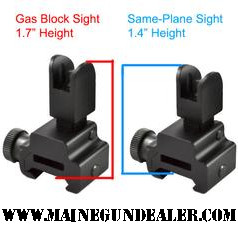
Magpul's sights work well, but they certainly aren't the most durable on the market. When you mount a polymer sight on a gas block there is a chance of melting the front sight due to a high rate of rapid fire. Normal target shooting should not cause the sights to melt. Aluminum sights are available but some can be very expensive.
Red Dot:
You will shoot much faster with a red dot optic than you will with open sights. With current red dots having battery life of more than two years (constantly on), dying batteries aren't much of an issue.
If you have a red dot, you will also need backup iron sights just in case the red dot is damaged or fails. There are lots of options here. Pick what looks good for you, Magpul's sights work well, but they certainly aren't the most durable on the market. When you mount a polymer sight on a gas block there is a chance of melting the front sight due to a high rate of rapid fire. Normal target shooting should not cause the sights to melt. Aluminum sights are available.
There are are options for mounting of your red dot std mounting, 1/3 cowitness or absolute cowitness
Standard mounting is for mounting on a flattop with no sights. The red dot is mounted lower on the receiver.
Absolute cowitness is when you get a absolute cowitness riser for your red dot . Your irons and aiming reticle are aimed together. Reticle and iron sights are in the center of the red dot.
Lower 1/3 cowitness is when you get a 1/3 cowitness riser for your red dot. You zero the irons and reticle separately. Reticle in the center and iron sights on the bottom of your red dot field of view.
Many mounts are optimally designed for weapon systems that run with fixed sights or BUIS's (back up iron sights) deployed in the upright position.
Chances are, if you actually need your irons, you're getting pretty busy, with at least one threat occupying your attention. Keeping them up, but out of the way, is the best of both worlds. The lower-1/3 cowitness design keeps those irons out of the way, until they are needed.
Clutter in you field of view (FOV) isn't a good thing...an upright rear sight can optically cover roughly 50% of the FOV. You can cover the front of a red dot all you want, and still use the sight (keeping both eyes open), but covering the rear obstructs both target and reticle. This is the disadvantage to absolute cowitness.
Even when you use the lower-1/3 method, the dot can be used "centered" in the tube. When both irons and dot zeroed, you can hit any target you can put the dot on, anywhere in the viewing area...independent of the irons. When you shift your eye position to the irons, the dot will follow (unless you turn the unit off).
Magnified Optics
One of the current trends amongst knowledgeable shooters is to replace their red dot with a low magnification scope. These scopes are generally in the neighborhood of 1x-4x in power. At close range they can be dialed down and used like a red dot, but they give you extra magnification at long range. I think these are especially useful if you find yourself taking frequent 100-300 meter shots. Otherwise, I prefer the red dot for better speed. For more detailed information on AR scopes see below.
"What's the best scope for an AR-15?"
That's a common question, with too many answers. It has too many answers because it's the wrong question. The question you should be asking is, "What's the best scope in my price range for my AR-15 doing a specific kind of shooting?" Let's start with that. Remember, no one scope is best for everything. Some manage to be good at several things, but the laws of physics and optics inevitably force compromises.
Shooting 100 yd targets?
Sniping at 600 meters?
Competing in 3-gun events?
Killing gophers on the ranch?
Taking on a five day hunting trek?
Taking into combat in a war zone?
Each of these is a dramatically different mission, and each has its own requirements. There are some general principles, though, that you can usually depend on. And, naturally, there are exceptions.
First: A more expensive scope is usually made better.
Made of better materials, built to more precise tolerances, with better optics. They are also usually better sealed against the elements, more durable, and often heavier.
Second: A larger objective lens -- the glass facing your target -- can gather more light.
This means a brighter sight picture for you, especially in low light conditions, and that can make the difference between identifying a target and losing a shot. Of course, that big lens adds to the weight. Glass is heavy.
Third: A larger tube allows more light transmission and usually enables more adjustment for windage and elevation.
But again, a 30mm tube will weigh more than a 1-inch (25.4mm) tube. More importantly, the cross-sectional area is about 39% greater, which means all the glass inside that tube will be at least 39% heavier, and probably more.
Fourth: There's really no reason to buy a scope that can outrange the ammo you're shooting.
Remember, even good .223 or 5.56 ammo is running out of kinetic energy at 600-700 meters. If you go to something like .300 Blackout, you might get another 100-200 meters of effective range from it. If you have an AR-10 (or other .308 weapon), 1000 meters is possible. Either way, your AR won't be making bullseyes at a mile like a Barrett .50 might in the right hands. Get a scope that can work at the maximum range you'll shoot, but remember all that adds size, weight, and cost - so don't buy more scope than you can use.
Fifth: Lower magnification means wider field of view, which means it's easier to acquire your target and keep on top of the situation around it.
Higher magnification means you can watch things farther away, and potentially more ease in observing or identifying your target once you've acquired it. While a variable power scope offers both options to some degree, it's optically more complex, which again means greater weight and cost.
You notice the pattern in the downsides of each of these: Weight and cost. Weight matters: A 19-ounce scope might not feel like much in the gun shop, but when you've hiked for three days with the rifle on your back -- or in your hands -- you may wish you'd chosen the 11-ounce scope instead. Not only that, but adding that much mass above the rifle's bore axis can't improve the handling, and a heavier weapon is always slower to move in your hands.
Most of us don't have an unlimited budget, so cost is another important parameter in choosing your scope. It would be good to decide how much you WANT to spend on a scope, and what's the most you'd be WILLING to spend on it. Remember: While more expensive often equates to better, there are exceptions.
Remember the question we started with: What is your intended use? Let's take a look at some of the ways you might shoot, and what's good for each of them.
Shooting 100 yd targets? May be the easiest one to answer: If all you'll be doing is shooting for pleasure at a fairly constant range, a fixed focal length scope (like that 6x) might be just the thing. It's likely to be smaller, lighter, and less expensive than a variable power optic, and with fewer elements, there's a chance it'll be more rugged, too.
Sniping at 600 meters? For what I call the "hobbyist sniper" -- that means the guys who spend thousands on rifles and glass, carefully calculate their own custom handloads, and spend weekends at the range with their ballistic charts memorized, consistently pushing those bullets to the extremes of their reach -- the answer is simple: Buy a high power, high quality scope. Some say the guideline is that the scope should cost as much as the rifle. Some say they spend three times as much on glass.
Competing in 3-Gun or similar events? Practical shooting is a fun and rapidly growing sport, teaching valuable skills that most of us hope we'll never have to use off the range. Most practical shooting events emphasize speed -- that means fast target acquisition, fast, accurate shooting, and then quickly moving on to the next point. Since it's a simulation of combat, a lot of the requirements are similar. You might do well with a 1x optic like an Eotech to get you on target quickly for the closer ranges. For distances beyond 100 meters, though, you might want some magnification. That's where the low-power zooms, like the 1-4x or 1-6x, can help you be fast and accurate.
Killing gophers on the ranch? You could spend your day surveying gopher holes and plotting the distance from each to the shooting bench on your porch. You'll want to plant little flags with the range beside each hole. More likely, you have to be ready to shoot at a variety of ranges. Gophers (and other varmints) don't always appear where you want them to, so a good, mid-range variable scope like a 3-9x might be best. If you'll be shooting at dusk or in low light, consider large objective lenses, high light transmission, and illuminated reticles. Also, if you're shooting from a bench rest, and not carrying the weapon on a long hike, you're a lot less worried about weight.
Taking on a five day hunting trek? You'll be shooting at all light levels, at medium to long ranges, and at unpredictable targets. You want a mid-to-long range variable scope, with the max depending on the range of your weapon. But be aware of weight, because you'll be carrying it a lot, and it only gets heavier as the days go on.
Taking into combat in a war zone? This is the extreme. This is where you replace that black scope with something like OD or FDE for low visibility, because somebody might be looking for you. You want the most durable and dependable optic you can get, and it's a good idea to put an anti-reflection device on the objective lens. If you're likely to engage at short ranges, a 1x optic like an Aimpoint or Eotech might be best. If you're a designated marksman, shooting over longer ranges, a medium-to-long variable scope is probably what you need. And if you're a sniper then you’ll suit your weapon’s optics to the environment and the mission.
Mounting AR-15 Scopes
For optical reasons, it's best to mount the scope as close to the bore axis as possible. This also makes the weapon easier to handle, as it keeps the mass close to the long axis of gravity.
But there's a problem here, a competing physical factor: Except for the AR and its relatives, most rifles have a stock that contacts your shoulder a little below the bore axis. This allows sights mounted directly on the barrel, because your eye is naturally higher than your shoulder. In designing the AR, Eugene Stoner decided to use a straight-line design from the muzzle to the butt, enabling the buffer and spring to absorb recoil. In terms of physics, this straight-line design also moves the center of recoil force much closer to the weapon's center of gravity, to help minimize muzzle climb. He them compensated by mounting the sights higher, on the iconic carrying handle and front sight base -- again, because your eyeball is higher than your shoulder.
And the first scopes for the M-16 mounted on top of that, a little higher still.
Now we have people mounting scopes as low as possible over the barrel. But while you can't really use iron sights below most scope mountings, it's still good to give the scope some breathing room between the rail and the scope itself. It improves your ergonomics, raising the scope back up to your natural eyeball level, and it also helps it clear the rifle's charging handle.
(Incidentally, once the scope takes over the top rail of your weapon, and its line of sight, you can still use iron sights. The answer is to get a set of 45-degree offset sights.
You may choose an offset mount to move the scope forward to clear the charging handle, but - depending on the scope's eye relief - that might not be an option. In such a case, you might find yourself looking at high-rise scope mounts, or even a separate riser piece to mount them on.
And once either of those options happens, you might have to adjust either the height of your cheek weld, or the length of your stock, or both, to maintain optimum eye positioning relative to the scope. Suddenly all the adjustments on stocks make a lot more sense, don't they?
Triggers
The factory trigger will serve most people well. There are a few options if you want to decrease trigger pull weight. Avoid competition triggers that have screw adjustments. You don't want the screws backing out on you at a bad time.
Accessories
You'll want attachment points for lights, optics and slings. You can buy a rifle with a factory-supplied railed fore-end. If you want an aftermarket fore-end with multiple attachment points, there are many cheap, lightweight, and durable options.
Most AR's come with a collapsible stock to allow different sized shooters to comfortably shoot the rifle. Some AR collapsible stocks extend out further than others this is true with stocks installed from the factory. If you need the stock to extend out further I do stock a butt pad that increases the length and will give the shooter more comfort.
No matter which rifle you buy, don't load it up with extraneous equipment. There are just a few useful accessories that need to go on a rifle.
You will also want a light on your rifle. There are many good options. Pick the one you like.
Beyond slings and lights, you will want plenty of extra magazines. Get at least 10. High capacity magazines have been the target of legislatures in the past. They were restricted so that civilians couldn't purchase newly-manufactured magazine from 1994-2004. During that time frame, magazines that today cost $10-$15 rose in price to over $100. Buy your magazines now before they are too expensive! I use P-Mags or the aluminum OEM mags such as Colt or Windham brand.
This should get you started with a very serviceable AR-15 rifle. If you have any additional questions, feel free to ask.
NOW STOCKING MANY AR ACCESSORIES. NOT ALL LISTED ON THIS WEBSITE. CLICK BELOW

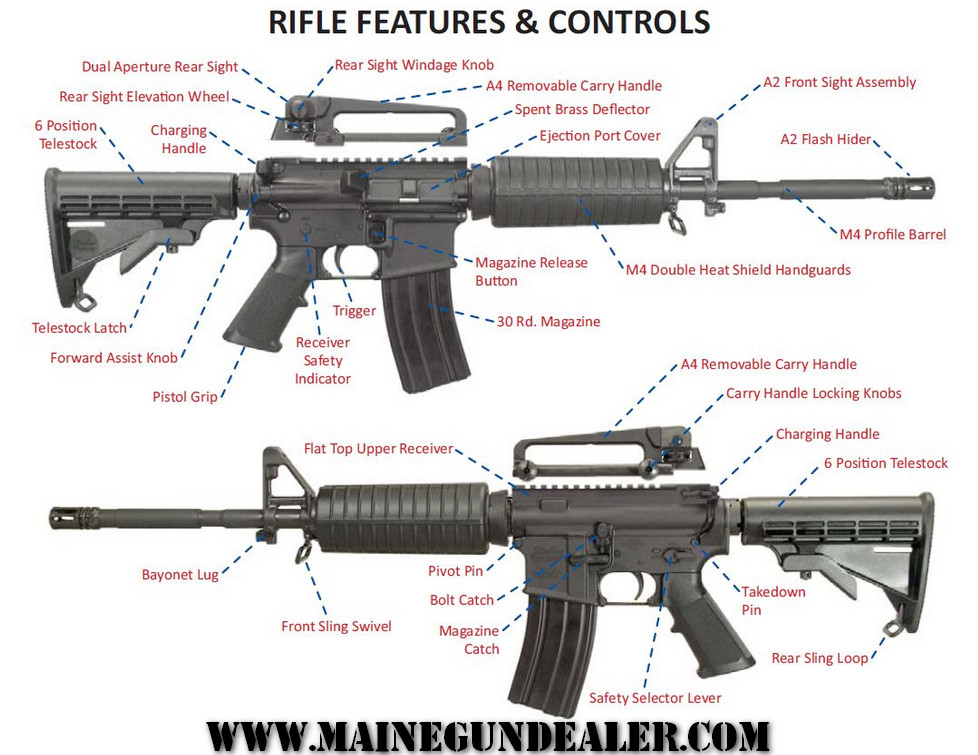


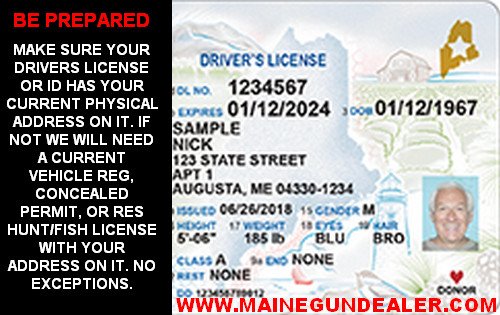
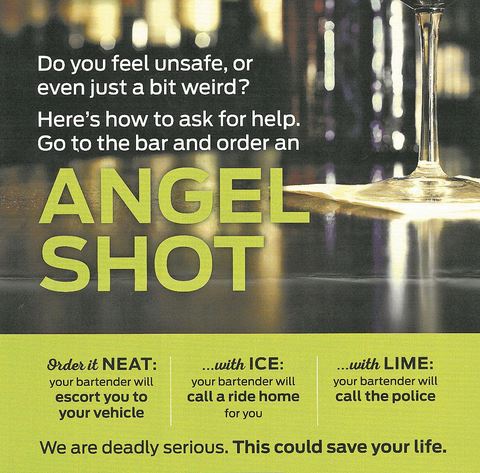
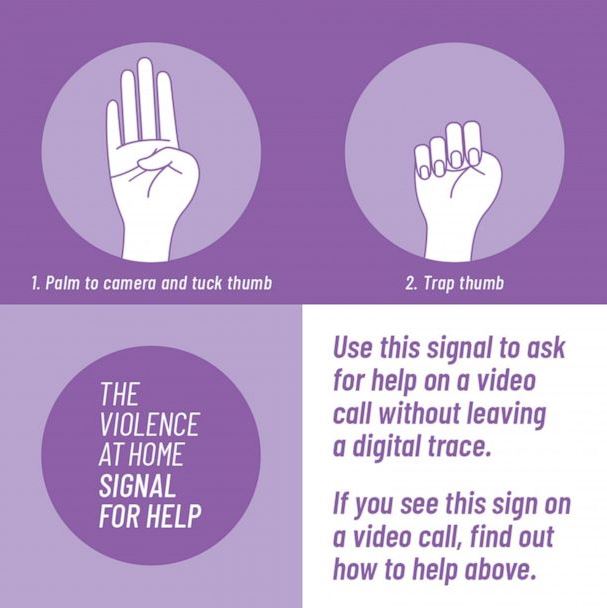
CRISIS HELP:
Available 24 Hours a Day, 7 Days a Week
If you are concerned about yourself or about somebody else please call the Maine Crisis Hotline 1-888-568-1112
If you are not in Maine, please call the National Suicide Prevention Lifeline 1-800-273-TALK (8255)
- OR -
Chat with a crisis counselor online:
Lifeline Crisis Chat
www.suicidepreventionlifeline.org/gethelp/lifelinechat.aspx
What to expect when you call a hotline:
You will be helped by a professionally trained crisis worker who will listen to you and connect you with services in your area. This may include connecting you with community resources, offering referrals to outpatient services or a local crisis unit, or providing a recommendation for in-patient services.
Additional Resources:
List of Maine Crisis Response Programs by County (*PDF)
National Suicide Prevention Lifeline Website: www.suicidepreventionlifeline.org
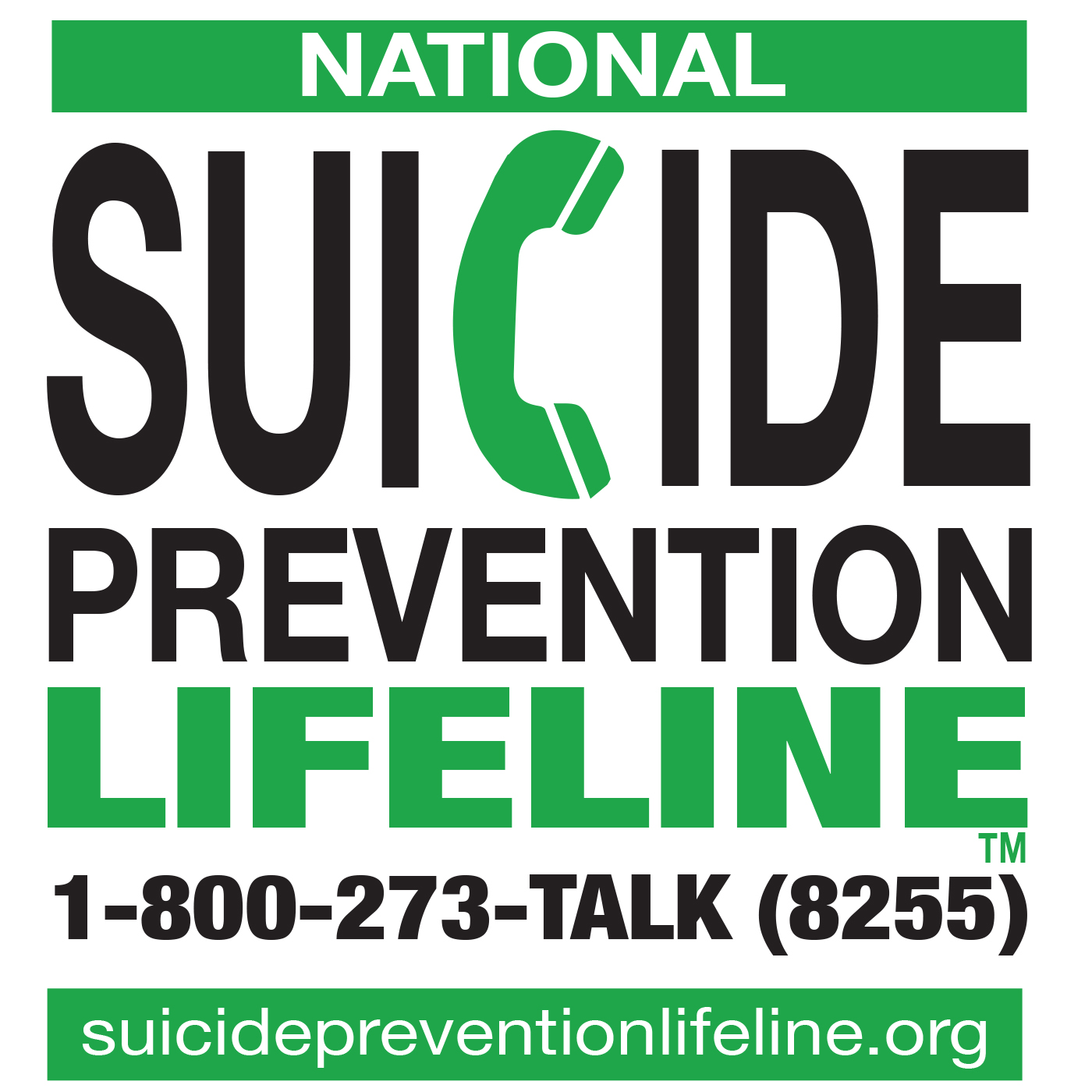

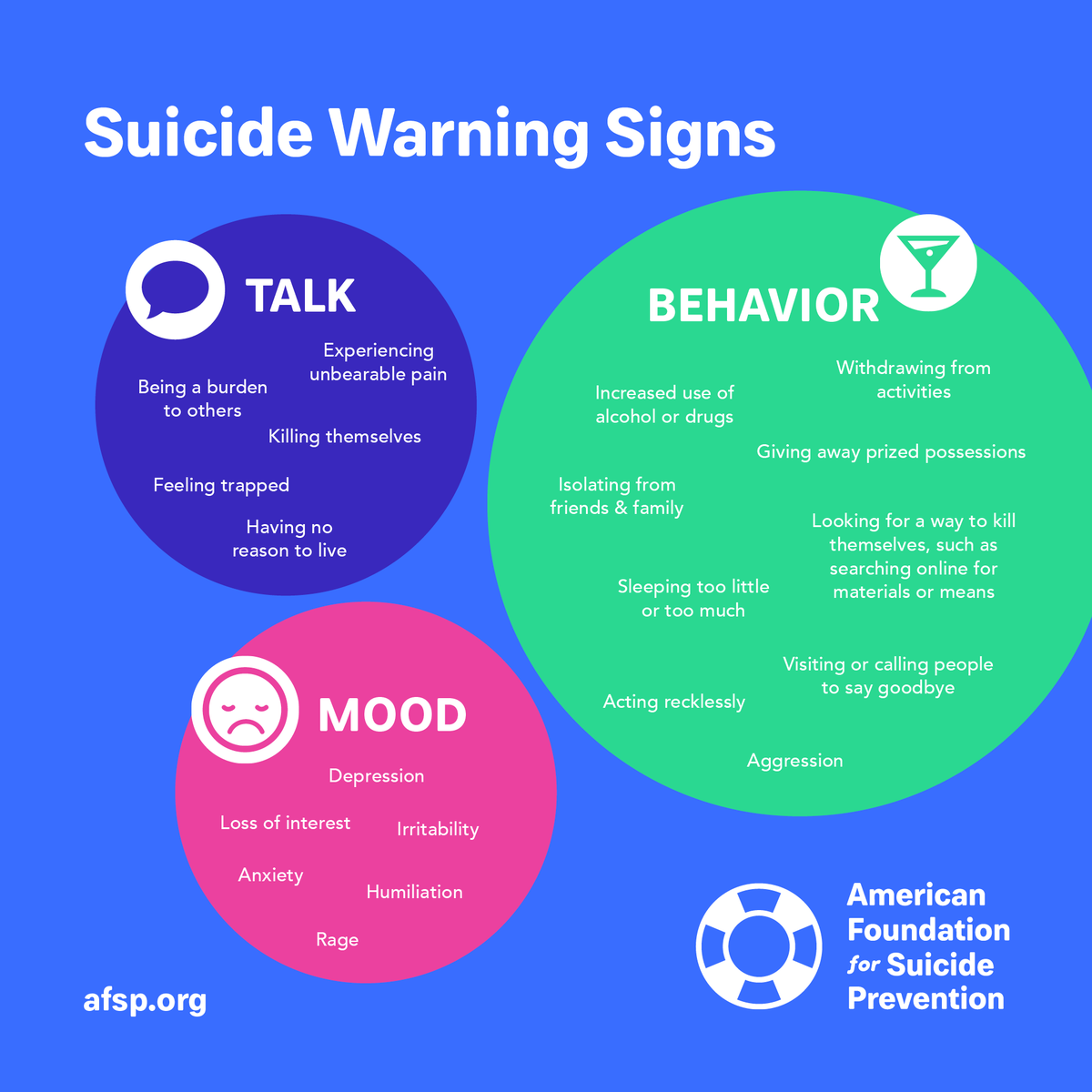
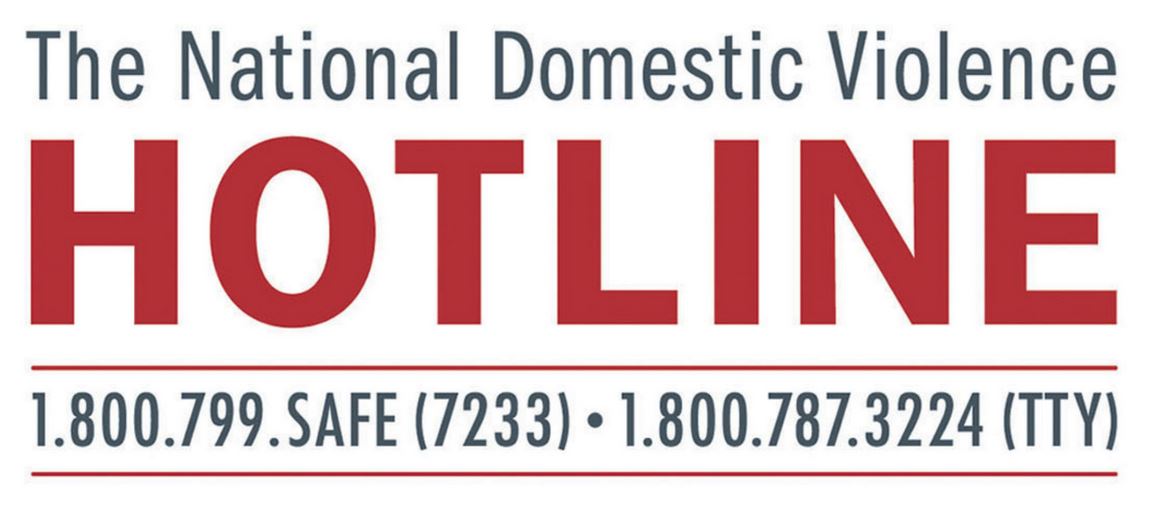


By: Fred E. Emerson III
Owner: Allsport Performance Inc.
681 Bog Road
Hermon, Maine
WWW.MAINEGUNDEALER.COM
WWW.MAINEGUNBUYER.COM
WWW.APPHOTOGRAPHYMAINE.COM








One of the most common question I get from customers is "How do I choose the right AR-15 rifle?" The options are overwhelming to many new rifle shooters and lots of folks need some guidance. It really isn't all that hard. Here are some tips to get you set up right and save you some money in the process.
Brands, Styles, Cost, and Use
If you want an AR-15 don't buy the multi brand "Frankenguns" generally don't hold up well. Expect to pay somewhere in the neighborhood of $700 and up for a high quality new AR-15. For an entry-level rifle 500 and up, consider name brands we carry that are factory made. There is a difference higher you go up in price. The entry-level rifle will shoot fine but you will notice better fit and finish, better trigger, smoother action of the bolt carrier, charging handle, and buffer tube assembly, higher quality barrels, higher quality handguards and butt stocks, and tighter tolerances for a better fit as you go up in price. I have shot many cheaper rifle that are accurate and function without issues.
Stay away from the lower priced "sport" versions. They cut costs be eliminating dust covers and forward assists. They also generally use cheaper internal parts as well. It's worth it to pay a little extra money for a rifle that will last a lifetime.
Stay away from buying custom AR's at shop that will build one for you. Why? Say I purchased this AR from this small local company that very few in the USA has heard of. What are you buying? Parts....lots of parts. When you go to sell it what are you selling? Parts...lots of parts. The custom AR you bought is made from parts that are from multiple manufacturers. Just because you spent a lot of money doesn't mean it is worth what you paid. You are not buying a well known brand with lots of history of making quality firearms. Many have been in business for many many years. They will stand behind their products and will be there for you for many years to come. Some like Windham Weaponry have a transferable warranty. You are buying a firearm that is made by a company that sources parts made to their specifications so all parts fit together tightly and are meant to work together. This makes the firearm more reliable for a the long term. Resale will always be higher on a well know name brand AR. If you want a custom AR save money and just build it yourself and you will also know what is going in it. AR's are fairly easy to build.
You don't have to spend over a $1000 dollars to get a great AR. I would rather spend under a $1000 on an AR and spend the rest of what I have saved up on ammo and magazines.
You have to ask yourself am I in the military? Am I going to shoot 1000's of rounds through this rifle? What is the purpose of buying this firearm? Serious Shooting? Plinking? Hunting? Putting it in the closet just to say I have one? An average person does not need to spend a lot of money on an AR.
Honestly if you spend $500 on an AR if you go to sell it you might lose $50 or $100 when you resell it. If you spend $1500 you may only sell it for a $1000 or $1200. I have seen this time and time again. There are a lot more people willing to spend under a $1000 on a used AR then are going to want to spend over a $1000. When the AR market gets crazy due to assault weapon bans or threats of bans I sold a lot more of the cheaper AR's. Shops and individuals were making more money by selling the cheap AR's. The more expensive AR's priced at $1000 or more were still available to buy but all the AR's under $1000 were sold out. The cheaper AR's are always a hot commodity. If you are looking at an investment buy multiple cheaper AR's as an investment you would be better off.
PRICE INCREASES
On January 1st distributors and manufacturers adjust their prices for the new year. I have seen a 1%-10% increase in prices on January 1st. Sometimes it is even more than that. I have never seen a price decrease. When there is a presidential election prices usually increase, sales / deals end, and availability of firearms, magazines and ammo decreases. I always encourage customers to buy if they can prior to January 1st. If there are hard to get guns that you want they will only get hard to get on January 1st and even worse during a presidential election year. Manufacturers shut down near the end of the year and distributors start reducing stock. They usually do not start production back up until February and guns do not start becoming available until mid March. This is true for every year I have been doing this.
Caliber/Chamber
Next, make sure you get a rifle that is chambered for 5.56mm rather than .223 Remington. While the two cartridges are dimensionally similar, they are not the same. The 5.56mm is loaded to a slightly higher velocity and pressure. It is also slightly dimensionally different. Because of this, a .223 Remington round can be safely fired in a 5.56mm rifle, but doing the opposite may be unsafe. Get the more versatile 5.56mm chamber.
Barrels and Twist Rates
I generally favor the shortest and lightest barrels I can find in my AR-15s. The long heavy barrels are useful for long range bench rest and match shooting, but aren't as practical for self defense. Get a rifle with a 16" lightweight or M-4 profile barrel with a flash suppressor. Make sure NOT to get a muzzle brake instead of a flash suppressor. The muzzle brakes are designed to reduce muzzle rise on recoil but do so at the cost of dramatically increasing noise and muzzle blast. The muzzle rise isn't enough of an issue with the 5.56mm rifle to warrant their use. If you ever have to shoot the rifle indoors or in a vehicle without hearing protection, you'll be glad you got the flash hider instead.
The twist rate determines which bullet performs best in the rifle. If you want to shoot longer/heavier bullets, you'll want a fast twist rate (1:7). If you shoot shorter/lighter bullets (55 grain or less), a slower twist rate is better. In general the new 1:8 twist or the 1:9 twist rates will work well for a broad variety of projectiles.
Get a lined barrel as well. Either the chrome lining or the newer Melonite or Nitride coatings will add life to your barrel as compared to the unlined/uncoated versions. The lining will give you 5,000 + extra rounds fired before you start experiencing accuracy degradation.
Flat Top or Carry Handle?
I prefer a rifle with a flat top so that I can mount a red dot optic or scope. It is very difficult to mount an optic reliably atop a carry handle. Another option is to get a rifle with a removable carry handle (often called the A-3 model). The removable carry handle has sights, but can be removed if you want to later install an optic like a red dot sight or scope. The A-3 models give you the ability to do use open sights or optics.
If you absolutely know that you are going to be using an optic (especially a magnified scope) get a rifle with a folding front sight so that it doesn't get in the way when you look through the scope. If you purchase a rifle with a fixed from sight removing the front sight tower and replacing it with a different gas block will be your best option. You could purchase a riser block as well to increase the hight of the optic. Get the rifle with the folding front sight or flattop with no sights from the start if that's what you want.
Red Dot Optics / Iron sights
Depending on if the rifle you purchased has sights on it or not you will need to decide what type sighting system you want to install.
Iron Sights:
If you choose iron sights there are many brands and styles of these sights. There are fixed and flip up style. Some rear sights such as Magpul have two different size peep hole options. You can also install a removable carry handle with a integrated rear sight. We stock Ruger flip up sights as well as other brands and styles which have good quality and a low price.
When installing a rear sight on a firearm that already has a fixed front sight you have many options of rear sights you can use. They are all made at standard height to they will work with your mill spec fixed front sight.
If you are installing front and rear sights on a flattop you must look at the height of the front gas block (assuming it does not have a floating hand guard with rail).
Some rifles have std gas blocks with rail that are lower than the receiver rail.
Some have same plane gas blocks that are the same height as the receiver rail.
When you have a rifle with a std gas block which is lower you can either buy a spacer to bring the height up to the same plane as the receiver rail or buy a sight that is specifically designed for use with a std gas block and is taller to compensate for the height difference. If you buy a spacer to raise the std gas block up to the same plane there will be more options for sights due to the fact more of the front sights are made for same plane gas blocks such as Magpul and Ruger.

Magpul's sights work well, but they certainly aren't the most durable on the market. When you mount a polymer sight on a gas block there is a chance of melting the front sight due to a high rate of rapid fire. Normal target shooting should not cause the sights to melt. Aluminum sights are available but some can be very expensive.
Red Dot:
You will shoot much faster with a red dot optic than you will with open sights. With current red dots having battery life of more than two years (constantly on), dying batteries aren't much of an issue.
If you have a red dot, you will also need backup iron sights just in case the red dot is damaged or fails. There are lots of options here. Pick what looks good for you, Magpul's sights work well, but they certainly aren't the most durable on the market. When you mount a polymer sight on a gas block there is a chance of melting the front sight due to a high rate of rapid fire. Normal target shooting should not cause the sights to melt. Aluminum sights are available.
There are are options for mounting of your red dot std mounting, 1/3 cowitness or absolute cowitness
Standard mounting is for mounting on a flattop with no sights. The red dot is mounted lower on the receiver.
Absolute cowitness is when you get a absolute cowitness riser for your red dot . Your irons and aiming reticle are aimed together. Reticle and iron sights are in the center of the red dot.
Lower 1/3 cowitness is when you get a 1/3 cowitness riser for your red dot. You zero the irons and reticle separately. Reticle in the center and iron sights on the bottom of your red dot field of view.
Many mounts are optimally designed for weapon systems that run with fixed sights or BUIS's (back up iron sights) deployed in the upright position.
Chances are, if you actually need your irons, you're getting pretty busy, with at least one threat occupying your attention. Keeping them up, but out of the way, is the best of both worlds. The lower-1/3 cowitness design keeps those irons out of the way, until they are needed.
Clutter in you field of view (FOV) isn't a good thing...an upright rear sight can optically cover roughly 50% of the FOV. You can cover the front of a red dot all you want, and still use the sight (keeping both eyes open), but covering the rear obstructs both target and reticle. This is the disadvantage to absolute cowitness.
Even when you use the lower-1/3 method, the dot can be used "centered" in the tube. When both irons and dot zeroed, you can hit any target you can put the dot on, anywhere in the viewing area...independent of the irons. When you shift your eye position to the irons, the dot will follow (unless you turn the unit off).
Magnified Optics
One of the current trends amongst knowledgeable shooters is to replace their red dot with a low magnification scope. These scopes are generally in the neighborhood of 1x-4x in power. At close range they can be dialed down and used like a red dot, but they give you extra magnification at long range. I think these are especially useful if you find yourself taking frequent 100-300 meter shots. Otherwise, I prefer the red dot for better speed. For more detailed information on AR scopes see below.
"What's the best scope for an AR-15?"
That's a common question, with too many answers. It has too many answers because it's the wrong question. The question you should be asking is, "What's the best scope in my price range for my AR-15 doing a specific kind of shooting?" Let's start with that. Remember, no one scope is best for everything. Some manage to be good at several things, but the laws of physics and optics inevitably force compromises.
Shooting 100 yd targets?
Sniping at 600 meters?
Competing in 3-gun events?
Killing gophers on the ranch?
Taking on a five day hunting trek?
Taking into combat in a war zone?
Each of these is a dramatically different mission, and each has its own requirements. There are some general principles, though, that you can usually depend on. And, naturally, there are exceptions.
First: A more expensive scope is usually made better.
Made of better materials, built to more precise tolerances, with better optics. They are also usually better sealed against the elements, more durable, and often heavier.
Second: A larger objective lens -- the glass facing your target -- can gather more light.
This means a brighter sight picture for you, especially in low light conditions, and that can make the difference between identifying a target and losing a shot. Of course, that big lens adds to the weight. Glass is heavy.
Third: A larger tube allows more light transmission and usually enables more adjustment for windage and elevation.
But again, a 30mm tube will weigh more than a 1-inch (25.4mm) tube. More importantly, the cross-sectional area is about 39% greater, which means all the glass inside that tube will be at least 39% heavier, and probably more.
Fourth: There's really no reason to buy a scope that can outrange the ammo you're shooting.
Remember, even good .223 or 5.56 ammo is running out of kinetic energy at 600-700 meters. If you go to something like .300 Blackout, you might get another 100-200 meters of effective range from it. If you have an AR-10 (or other .308 weapon), 1000 meters is possible. Either way, your AR won't be making bullseyes at a mile like a Barrett .50 might in the right hands. Get a scope that can work at the maximum range you'll shoot, but remember all that adds size, weight, and cost - so don't buy more scope than you can use.
Fifth: Lower magnification means wider field of view, which means it's easier to acquire your target and keep on top of the situation around it.
Higher magnification means you can watch things farther away, and potentially more ease in observing or identifying your target once you've acquired it. While a variable power scope offers both options to some degree, it's optically more complex, which again means greater weight and cost.
You notice the pattern in the downsides of each of these: Weight and cost. Weight matters: A 19-ounce scope might not feel like much in the gun shop, but when you've hiked for three days with the rifle on your back -- or in your hands -- you may wish you'd chosen the 11-ounce scope instead. Not only that, but adding that much mass above the rifle's bore axis can't improve the handling, and a heavier weapon is always slower to move in your hands.
Most of us don't have an unlimited budget, so cost is another important parameter in choosing your scope. It would be good to decide how much you WANT to spend on a scope, and what's the most you'd be WILLING to spend on it. Remember: While more expensive often equates to better, there are exceptions.
Remember the question we started with: What is your intended use? Let's take a look at some of the ways you might shoot, and what's good for each of them.
Shooting 100 yd targets? May be the easiest one to answer: If all you'll be doing is shooting for pleasure at a fairly constant range, a fixed focal length scope (like that 6x) might be just the thing. It's likely to be smaller, lighter, and less expensive than a variable power optic, and with fewer elements, there's a chance it'll be more rugged, too.
Sniping at 600 meters? For what I call the "hobbyist sniper" -- that means the guys who spend thousands on rifles and glass, carefully calculate their own custom handloads, and spend weekends at the range with their ballistic charts memorized, consistently pushing those bullets to the extremes of their reach -- the answer is simple: Buy a high power, high quality scope. Some say the guideline is that the scope should cost as much as the rifle. Some say they spend three times as much on glass.
Competing in 3-Gun or similar events? Practical shooting is a fun and rapidly growing sport, teaching valuable skills that most of us hope we'll never have to use off the range. Most practical shooting events emphasize speed -- that means fast target acquisition, fast, accurate shooting, and then quickly moving on to the next point. Since it's a simulation of combat, a lot of the requirements are similar. You might do well with a 1x optic like an Eotech to get you on target quickly for the closer ranges. For distances beyond 100 meters, though, you might want some magnification. That's where the low-power zooms, like the 1-4x or 1-6x, can help you be fast and accurate.
Killing gophers on the ranch? You could spend your day surveying gopher holes and plotting the distance from each to the shooting bench on your porch. You'll want to plant little flags with the range beside each hole. More likely, you have to be ready to shoot at a variety of ranges. Gophers (and other varmints) don't always appear where you want them to, so a good, mid-range variable scope like a 3-9x might be best. If you'll be shooting at dusk or in low light, consider large objective lenses, high light transmission, and illuminated reticles. Also, if you're shooting from a bench rest, and not carrying the weapon on a long hike, you're a lot less worried about weight.
Taking on a five day hunting trek? You'll be shooting at all light levels, at medium to long ranges, and at unpredictable targets. You want a mid-to-long range variable scope, with the max depending on the range of your weapon. But be aware of weight, because you'll be carrying it a lot, and it only gets heavier as the days go on.
Taking into combat in a war zone? This is the extreme. This is where you replace that black scope with something like OD or FDE for low visibility, because somebody might be looking for you. You want the most durable and dependable optic you can get, and it's a good idea to put an anti-reflection device on the objective lens. If you're likely to engage at short ranges, a 1x optic like an Aimpoint or Eotech might be best. If you're a designated marksman, shooting over longer ranges, a medium-to-long variable scope is probably what you need. And if you're a sniper then you’ll suit your weapon’s optics to the environment and the mission.
Mounting AR-15 Scopes
For optical reasons, it's best to mount the scope as close to the bore axis as possible. This also makes the weapon easier to handle, as it keeps the mass close to the long axis of gravity.
But there's a problem here, a competing physical factor: Except for the AR and its relatives, most rifles have a stock that contacts your shoulder a little below the bore axis. This allows sights mounted directly on the barrel, because your eye is naturally higher than your shoulder. In designing the AR, Eugene Stoner decided to use a straight-line design from the muzzle to the butt, enabling the buffer and spring to absorb recoil. In terms of physics, this straight-line design also moves the center of recoil force much closer to the weapon's center of gravity, to help minimize muzzle climb. He them compensated by mounting the sights higher, on the iconic carrying handle and front sight base -- again, because your eyeball is higher than your shoulder.
And the first scopes for the M-16 mounted on top of that, a little higher still.
Now we have people mounting scopes as low as possible over the barrel. But while you can't really use iron sights below most scope mountings, it's still good to give the scope some breathing room between the rail and the scope itself. It improves your ergonomics, raising the scope back up to your natural eyeball level, and it also helps it clear the rifle's charging handle.
(Incidentally, once the scope takes over the top rail of your weapon, and its line of sight, you can still use iron sights. The answer is to get a set of 45-degree offset sights.
You may choose an offset mount to move the scope forward to clear the charging handle, but - depending on the scope's eye relief - that might not be an option. In such a case, you might find yourself looking at high-rise scope mounts, or even a separate riser piece to mount them on.
And once either of those options happens, you might have to adjust either the height of your cheek weld, or the length of your stock, or both, to maintain optimum eye positioning relative to the scope. Suddenly all the adjustments on stocks make a lot more sense, don't they?
Triggers
The factory trigger will serve most people well. There are a few options if you want to decrease trigger pull weight. Avoid competition triggers that have screw adjustments. You don't want the screws backing out on you at a bad time.
Accessories
You'll want attachment points for lights, optics and slings. You can buy a rifle with a factory-supplied railed fore-end. If you want an aftermarket fore-end with multiple attachment points, there are many cheap, lightweight, and durable options.
Most AR's come with a collapsible stock to allow different sized shooters to comfortably shoot the rifle. Some AR collapsible stocks extend out further than others this is true with stocks installed from the factory. If you need the stock to extend out further I do stock a butt pad that increases the length and will give the shooter more comfort.
No matter which rifle you buy, don't load it up with extraneous equipment. There are just a few useful accessories that need to go on a rifle.
You will also want a light on your rifle. There are many good options. Pick the one you like.
Beyond slings and lights, you will want plenty of extra magazines. Get at least 10. High capacity magazines have been the target of legislatures in the past. They were restricted so that civilians couldn't purchase newly-manufactured magazine from 1994-2004. During that time frame, magazines that today cost $10-$15 rose in price to over $100. Buy your magazines now before they are too expensive! I use P-Mags or the aluminum OEM mags such as Colt or Windham brand.
This should get you started with a very serviceable AR-15 rifle. If you have any additional questions, feel free to ask.
NOW STOCKING MANY AR ACCESSORIES. NOT ALL LISTED ON THIS WEBSITE. CLICK BELOW





CRISIS HELP:
Available 24 Hours a Day, 7 Days a Week
If you are concerned about yourself or about somebody else please call the Maine Crisis Hotline 1-888-568-1112
If you are not in Maine, please call the National Suicide Prevention Lifeline 1-800-273-TALK (8255)
- OR -
Chat with a crisis counselor online:
Lifeline Crisis Chat
www.suicidepreventionlifeline.org/gethelp/lifelinechat.aspx
What to expect when you call a hotline:
You will be helped by a professionally trained crisis worker who will listen to you and connect you with services in your area. This may include connecting you with community resources, offering referrals to outpatient services or a local crisis unit, or providing a recommendation for in-patient services.
Additional Resources:
List of Maine Crisis Response Programs by County (*PDF)
National Suicide Prevention Lifeline Website: www.suicidepreventionlifeline.org










